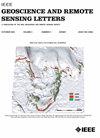Seismic Impedance Inversion Using Fully Convolutional Residual Network and Transfer Learning
IF 4
3区 地球科学
Q2 ENGINEERING, ELECTRICAL & ELECTRONIC
引用次数: 63
Abstract
In this letter, we use a fully convolutional residual network (FCRN) for seismic impedance inversion. After training with appropriate data, the FCRN can effectively predict impedance with high accuracy, and have good robustness against noise and phase difference. However, it cannot give acceptable results in training and predicting models with different geological features. Transfer learning is later introduced to ease this problem. Marmousi2 and Overthrust models are used to verify the effectiveness of the proposed method. Tests show that after fine-tuned by five traces of Overthrust model, the FCRN trained on the Marmousi2 model can give a comparable result similarly predicted by the FCRN trained purely on the Overthrust model.利用全卷积残差网络和传递学习反演地震阻抗
在这篇文章中,我们使用全卷积残差网络(FCRN)进行地震阻抗反演。经过适当的数据训练,FCRN能有效预测阻抗,精度高,对噪声和相位差具有良好的鲁棒性。然而,对于具有不同地质特征的模型的训练和预测,它不能给出令人满意的结果。迁移学习后来被引入来缓解这个问题。利用Marmousi2和Overthrust模型验证了该方法的有效性。实验表明,经过5道Overthrust模型的微调后,基于Marmousi2模型训练的FCRN可以得到与单纯基于Overthrust模型训练的FCRN相似的预测结果。
本文章由计算机程序翻译,如有差异,请以英文原文为准。
求助全文
约1分钟内获得全文
求助全文
来源期刊

IEEE Geoscience and Remote Sensing Letters
工程技术-地球化学与地球物理
CiteScore
7.60
自引率
12.50%
发文量
1113
审稿时长
3.4 months
期刊介绍:
IEEE Geoscience and Remote Sensing Letters (GRSL) is a monthly publication for short papers (maximum length 5 pages) addressing new ideas and formative concepts in remote sensing as well as important new and timely results and concepts. Papers should relate to the theory, concepts and techniques of science and engineering as applied to sensing the earth, oceans, atmosphere, and space, and the processing, interpretation, and dissemination of this information. The technical content of papers must be both new and significant. Experimental data must be complete and include sufficient description of experimental apparatus, methods, and relevant experimental conditions. GRSL encourages the incorporation of "extended objects" or "multimedia" such as animations to enhance the shorter papers.
 求助内容:
求助内容: 应助结果提醒方式:
应助结果提醒方式:


